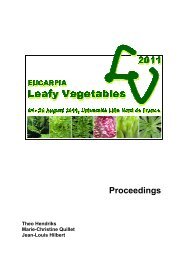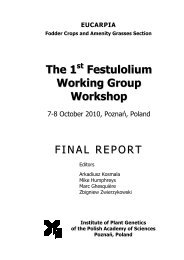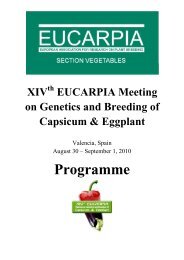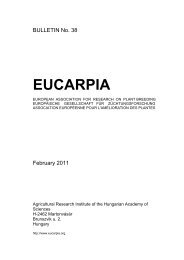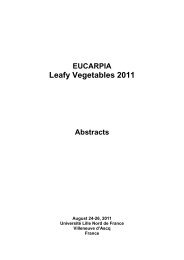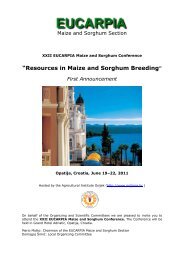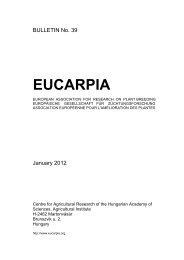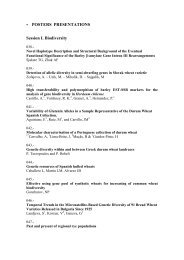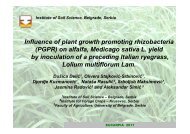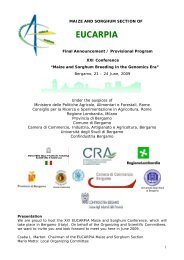Plant breeding for organic and sustainable, low-input agriculture
Plant breeding for organic and sustainable, low-input agriculture
Plant breeding for organic and sustainable, low-input agriculture
You also want an ePaper? Increase the reach of your titles
YUMPU automatically turns print PDFs into web optimized ePapers that Google loves.
On-farm conservation of cereal l<strong>and</strong>races on the Outer Hebrides, Scotl<strong>and</strong> – is<br />
participatory crop improvement the best approach?<br />
Maria Scholten<br />
Scottish Agricultural College, University of Edinburgh, Scotl<strong>and</strong>, UK<br />
The Outer Hebrides off the North West coast of Scotl<strong>and</strong> are the largest remaining area of cereal<br />
l<strong>and</strong>races in the UK, possibly in north-western Europe. Bere barley, a local rye <strong>and</strong> Avena<br />
strigosa, have been home seed saved over generations <strong>and</strong> their cultivation <strong>for</strong>ms a <strong>low</strong>-<strong>input</strong><br />
<strong>low</strong>-<strong>input</strong> system on the nutrient deficient light <strong>and</strong> very alkaline soils. Because of the high<br />
freight costs, fodder cereal production is locally still important as cheap home produced<br />
winterfeed. Cereal producers deliver an important ecological service in the maintenance of the<br />
machair coastal grassl<strong>and</strong>s habitat, an Annex 1 habitat on the EU directive, important <strong>for</strong> the<br />
conservation of threatened bird species such as corncrake <strong>and</strong> corn bunting. Several bottlenecks<br />
in crop <strong>and</strong> seed production have been observed over the last decades. Seed crop failures caused<br />
by adverse weather or diseases have been recurrent in the history of the isl<strong>and</strong>s. In recent<br />
decades an additional problem in the <strong>for</strong>m of a large greylag geese population has shown up,<br />
which attacks <strong>and</strong> destroys the (seed) crop. Associated with the threat of geese is the increase in<br />
the use of silage. Smut has been a persistent disease problem while ergot was frequently<br />
observed in rye fields. As with other l<strong>and</strong>races <strong>for</strong> example in Italy, the l<strong>and</strong>races are grown by<br />
an ageing <strong>and</strong> declining farmer’s population.<br />
On farm conservation projects in Europe, more specifically the UK, are rare. Some <strong>for</strong>ms of<br />
indirect conservation are however in place, funded <strong>and</strong> managed by wildlife conservation<br />
organizations such as the Royal Society <strong>for</strong> the Protection of Birds (RSPB) <strong>and</strong> Scottish Natural<br />
Heritage (SNH). These projects aim at maintaining traditional cereal cropping methods as means<br />
of maintaining the Machair grassl<strong>and</strong>s as a bird habitat. This strictly conservationist approach<br />
tends to focus on tradition. Is l<strong>and</strong>race conservation based on a participatory approach such a<br />
better approach <strong>for</strong> local seed management to safeguard continued cereal cultivation? This option<br />
will be discussed in the poster.<br />
71




